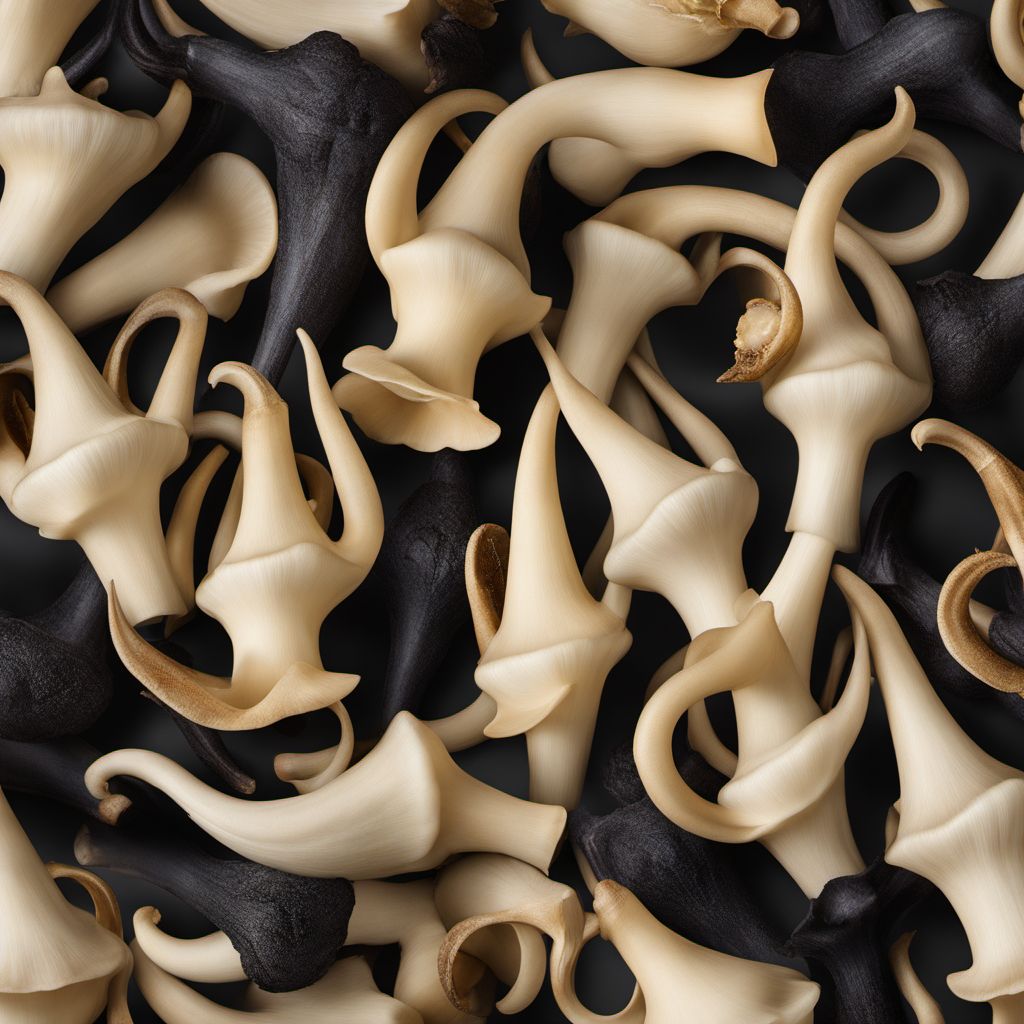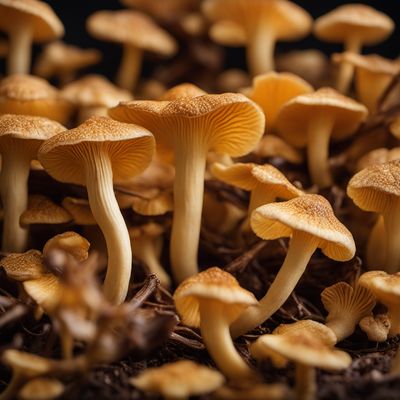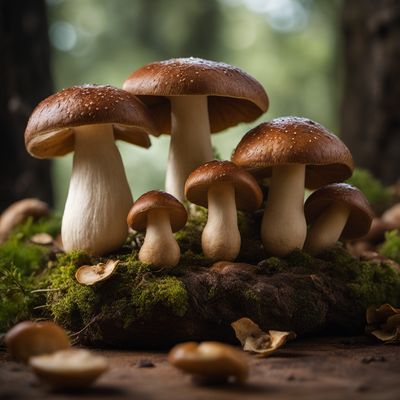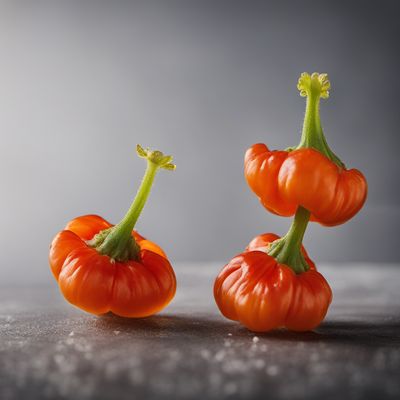
Ingredient
Horns of plenty
Exploring the Delights of Horns of Plenty
Horns of plenty mushrooms have a distinctive appearance, with their black or dark brown color and trumpet-shaped caps. They have a meaty texture and a rich, earthy flavor that intensifies when cooked. These mushrooms are often used in sautés, sauces, and risottos, adding depth and complexity to the dish.
Origins and history
Horns of plenty mushrooms are native to Europe and have been enjoyed for centuries in various culinary traditions. They are highly regarded in French and Italian cuisines, where they are often foraged in the wild. These mushrooms have a rich history and are considered a delicacy in many gourmet dishes.
Nutritional information
Horns of plenty mushrooms are low in calories and fat, making them a healthy addition to meals. They are a good source of dietary fiber and contain essential minerals such as potassium and copper. These mushrooms also provide some B vitamins and antioxidants.
Allergens
There are no known allergens associated with horns of plenty mushrooms, making them a suitable choice for individuals with common food allergies. However, it's always important to ensure that mushrooms are properly cooked and handled to avoid any potential contamination or adverse reactions.
How to select
When selecting horns of plenty mushrooms, look for ones that are firm and have a fresh, earthy aroma. Avoid mushrooms that are slimy, discolored, or have a strong unpleasant odor. It's best to purchase these mushrooms from reputable suppliers or farmers markets to ensure their quality and freshness.
Storage recommendations
To prolong the shelf life of horns of plenty mushrooms, store them in a paper bag or a loosely closed container in the refrigerator. Avoid washing the mushrooms until you are ready to use them, as excess moisture can cause them to spoil faster. Fresh horns of plenty mushrooms can be stored for up to a week.
How to produce
Horns of plenty mushrooms are not typically cultivated at home due to their specific growing requirements and the difficulty of mimicking their natural habitat. However, if you have access to wild mushrooms and are knowledgeable about foraging, you can try searching for horns of plenty mushrooms in wooded areas during their growing season.
Preparation tips
Horns of plenty mushrooms can be sautéed with garlic and butter, added to creamy sauces for pasta or risotto, or used as a topping for pizzas and tarts. They pair well with herbs such as thyme and rosemary, as well as ingredients like cream, cheese, and wine. These mushrooms can also be dried or preserved to enjoy their unique flavor throughout the year.
Culinary uses
Horns of plenty mushrooms are commonly used in French and Italian cuisines, where they are prized for their unique flavor and appearance. They are often featured in dishes such as risottos, pasta sauces, and meat-based stews. These mushrooms are also popular among gourmet chefs and food enthusiasts for their culinary versatility.
Availability
Horns of plenty mushrooms are commonly found in Europe, particularly in countries like France, Italy, and Germany. They are also available in some specialty grocery stores or farmers markets in other regions, although their availability may be limited.
More ingredients from this category

Saffron milk cap
The Golden Delicacy: Unveiling the Secrets of Saffron Milk Cap

Gypsy mushroom
The Enigmatic Delicacy: Gypsy Mushroom

Hedgehog mushrooms
Exquisite Earthiness: Hedgehog Mushrooms

Chanterelles
Golden Delicacy

Truffles
The Earth's Edible Gems

Ceps
The King of Mushrooms

Scotch bonnet mushrooms
Fiery Delights: Unleashing the Flavors of Scotch Bonnet Mushrooms

Other wild fungi
Exploring the Hidden World of Wild Mushrooms

Honey mushroom
The Golden Fungus

Saint George's mushrooms
The Forest Delicacy

Morels
The Earthy Delicacy